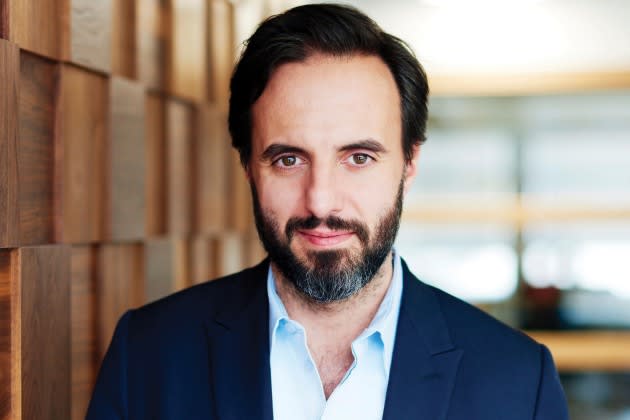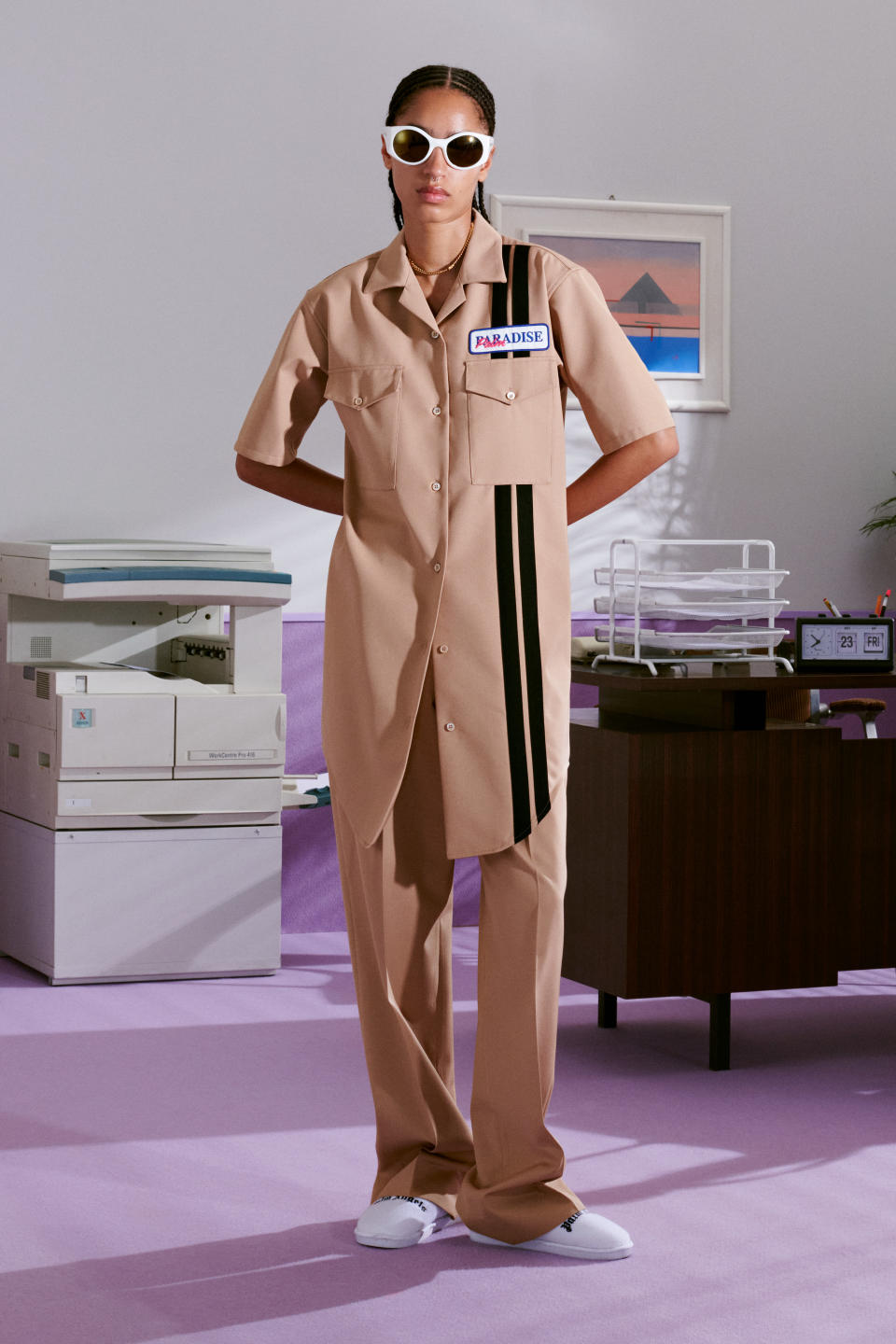Farfetch Outlook Sends Stock Down 34.9%

José Neves was back in New York on Thursday, hosting Farfetch’s first Capital Markets Day and declaring the luxury platform was at a “tipping point,” where its various businesses are playing well off each other and ready to drive real growth.
But shareholders wanted something more than the projections the company offered and sent shares of its stock down 34.9 percent to $5.53.
More from WWD
Neves, founder, chairman and chief executive officer of Farfetch, is accustomed to markets running hot and cold on the company, which straddles the line between fashion and technology, and has an ambitious plan to plug a fragmented luxury world.
“We have absolutely built the global platform for luxury and we have a clear leadership position in the space,” Neves told analysts attending the meeting. “Farfetch is at the tipping point. We’re at the point where we’re going to start to leverage the investments of the past 14 years to continue on the path of growth, profitable growth and cash flow generation. And today is all about providing clarity to you on the building blocks of that roadmap.”
At least in the market on Thursday, the clarity didn’t help.
Neves presented Farfetch as a collection of three main and intertwined businesses: Platform Solutions, which provides e-commerce capabilities to brands and retailers; the Marketplace, connecting buyers and sellers via e-commerce, and the New Guards Group, which develops brands.
“These three pillars really form a strong ecosystem that delivers more to our brand partners than the sum of the parts,” the CEO said, describing how the three businesses reinforce each other.
For instance, brands on the marketplace that like the functionality there can lean in more with Farfetch tech from Platform Solutions. And New Guards, which holds the Off-White license and owns Palm Angels and more, operates major brands on the marketplace.
It’s been an unusual and challenging year for Farfetch, which closed its business in Russia following President Vladimir Putin’s invasion of Ukraine and has also been hit by COVID-19 lockdowns in China.
The company previously projected that this year’s gross merchandise value on its digital platform would decline by 5 to 7 percent to $3.4 billion to $3.5 billion, while its brand platform GMV will be flat at about $468 million. Adjusted margins on earnings before interest, taxes, depreciation and amortization are expected to range from down 3 percent to down 5 percent.
At the meeting with Wall Street, Farfetch said its GMV would rise 20 to 22 percent next year to as much as $4.9 billion as adjusted EBITDA margins gain 1 to 3 percent.
For 2025, the company is targeting GMV of $10 billion with an adjusted EBITDA margin of 10 percent. That Marketplace division was seen producing an EBITDA margin of about 5 percent while Platform Solutions and the New Guards were both seen at about 20 percent.
The biggest piece of that $10 billion milestone is the company’s Platform Solutions business, which will account for $4.3 billion of GMV, driven by partnerships with Bergdorf Goodman and Ferragamo as well as Richemont’s maisons and Yoox Net-a-porter, under a deal that’s still subject to regulatory approval.
Neves’ confidence is buttressed by the luxury industry itself, which he described as “very profitable and very resilient” and one that pushed through the financial crisis of 2008 and COVID-19.
“I believe this industry has the DNA and the structure to really recover very quickly from any such macro difficulty in the future,” he said.
Neves also described luxury as an industry that very much needed a digital platform.
“This is an industry of fragmented supply, that’s why the opportunity is so big. It’s the fragmentation on both the demand and the supply side,” he said.
While there are multibillion-dollar luxury giants, like Chanel, Louis Vuitton, Hermès and Gucci, there are only a handful of them. “Very quickly you’re in $1 billion territory,” Neves said. “A $1 billion luxury brand is a very large global brand yet it’s 0.3 percent market share.
“The reason why the industry’s fragmented and will always be is because fashion is the part of culture that talks about our individuality,” he said. “As human beings we have two paradoxical needs, the need to belong and the need to affirm our individuality. No part of culture brings that to life better than fashion.”
Neves described a fashionista’s closet as a “microcosm” of the industry.
“You will see heritage brands, new designers, high price points, low price points and many different aesthetics for a single person because we also use fashion to affirm how we’re feeling every single day. So this inherent expression of individuality always leads to fragmentation on the supply side.”
The demand side is even more fragmented with a global customer base — and also feeds all the more into the Farfetch thesis.
“This fragmentation naturally leads to marketplaces and this is not new; marketplaces have existed for decades,” he said. “Fifth Avenue is a marketplace. New Bond Street is a marketplace….There’s a reason why all the luxury brands aggregate in a few blocks.”
Department stores and shopping malls are also marketplaces, the CEO said.
Online marketplaces are even more important, he said, noting that there are usually multiple competitors in a given space — with Spotify and Apple Music in music or Uber and Lift in rides.
In luxury, he contended there is only Farfetch.
“You have retailers that have done a really good job of becoming etailers and you have department stores that have operated websites, but there’s really no application of the platform philosophy with a strong tech DNA other than Farfetch,” Neves claimed.

Now he has to convince Wall Street, again, that Farfetch is really ready to go big and drive profits.
While the company’s roots are in its Marketplace and there’s been a lot of focus on the Platform business as high-profile new users come on board, the meeting also shed some new light on the New Guards Group.
Davide de Giglio, founder and CEO of the division, talked about some of the underpinning to Off-White and Palm Angels and how the company is going to grow through a license with Reebok for premium looks.
“At New Guards we find creatives [who] enable the conversation and we provide the platform,” de Giglio said. “The platform is the hardest to develop and that’s why so many businesses fail and we have succeeded in developing that. NG has the people and the infrastructure to build brands. The strongest thing behind our brand is the platform.”
He said Off-White was sticking true to the vision of its late founder Virgil Abloh and finding continued success and that Palm Angels would be a “very big brand.”
“We’re doing it again,” de Giglio said. “Many might think that we got lucky with Off-White, but Palm Angels’ success proves the luck.”
At Reebok — which Authentic Brands Group bought this year from Adidas, licensing out parts of the business to New Guards — de Giglio said there was plenty of room to go higher.
“There are only a few mega heritage sneaker brands — Nike, Adidas, New Balance, Reebok and Puma,” he said. “Reebok is the only heritage brand part of that group with no place in the premium market. We will change that. We own the market, own the channel, we have the right consumers and we are very strong on collaborations. We know how to position Reebok in the right way. There is a lot we can do with collaborations.”
The question for investors is just what Farfetch can do with New Guards and the rest of its businesses and whether it all adds up, as Neves contends, to be more than “the sum of the parts.”


